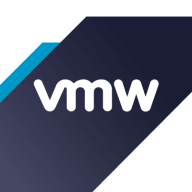Microsoft Intune provides centralized management of mobile devices and applications, ensuring security, compliance, and productivity through integration with Microsoft services like Microsoft 365 and Azure Active Directory.
Organizations use Intune for managing mobile devices and applications, enhancing security and compliance across platforms. With features like single sign-on, conditional access, and zero-touch deployment via Autopilot, it facilitates efficient operations. Intune's scalability, easy enrollment, and capabilities such as remote wipe support diverse device management, offering robust data protection and efficient operation. Despite its features, improvement areas include reporting, compatibility with non-Microsoft devices, and better support for macOS and Linux devices.
What are the key features of Microsoft Intune?
- Seamless Integration: Works with Microsoft 365, Azure Active Directory, and System Center for streamlined management.
- Conditional Access: Enhances security with policies that restrict access based on conditions.
- Autopilot: Provides zero-touch deployment for setting up new devices efficiently.
- Mobile Device Management: Enables control over both personal and corporate devices.
- Application Deployment: Facilitates app delivery across a range of devices.
What benefits should users look for in reviews?
- Centralized Management: Reduces complexity by managing devices and applications in one place.
- Security Enhancement: Protects data with features like remote wipe and compliance monitoring.
- Improved Productivity: Enhances efficiency with seamless integration and automation features.
- Device Scalability: Supports diverse device management for growing business needs.
In industries such as finance, healthcare, and education, Microsoft Intune is implemented to ensure secure and compliant device management. Companies leverage its capabilities to deploy security policies and manage both corporate-owned and BYOD environments, facilitating a unified approach to data protection and compliance.
Parallels Mac Management for Microsoft SCCM allows IT to maximize investments. It enables administrators to leverage existing processes by using SCCM as the single pane of glass to manage both PCs and Mac computers.
vCenter Configuration Manager is a powerful configuration management tool that is designed to enable organizations to ensure that any environment that they use to conduct business is configured in the most effective possible way. It can automate configurations consistently across virtual, physical, and cloud environments. Additionally, it enables users to place critical functions into the hands of the solution thereby avoiding the possibility that human error will reduce a business’s operations. It also hardens operations against bad actors who look for holes in a user’s security compliance policies that they can exploit.
vCenter Configuration Manager Benefits
Some of the ways that organizations can benefit by choosing to deploy vCenter Configuration Manager include:
-
Reduction of overhead costs. Configuration Manager makes it possible for users to operate with the highest possible level of effectiveness while at the same time reducing the overhead costs associated with their work. One way that it does so is by automating many tasks that would otherwise be expensive to train users to perform. This also saves users time working on basic tasks that they can then devote to other operations that need human intervention.
-
Flexibility. Configuration Manager is a highly flexible solution. It is a platform-agnostic solution that can run consistently across VMware infrastructure and Windows, Linux, and UNIX operating systems. Users can use it on the operating system that best meets their business needs. Organizations can operate without having to invest in any particular operating system.
-
Threat reduction. It enables users to reduce threats to their systems. Its approach to centralized configuration management makes it simple for users to keep control of their security setup. This means administrators can spend most of their time ensuring that an organization’s technology is safe instead of trying to figure out how to do so. Configuration Manager's ability to correlate configuration changes with issues that are detected by VMware’s vCenter Operations Manager significantly reduces the amount of time needed in order to resolve any issues that arise.
-
Deep data collection and visibility. The secure and automatic data collection provides users with a wealth of data. This gives organizations the ability to see all aspects of their configuration environment. Administrators are able to track everything without worrying that they are missing information that is critical to their work.
-
Scalability. Configuration Manager is a highly scalable product. Users can scale it so that their configuration management operations can effortlessly keep pace with the work that they are doing. They can maintain their security and operations without turning to another product or being forced to make expensive purchases in order to keep up.
vCenter Configuration Manager Features
-
Centralized UI. Configuration Manager comes with a centralized UI that users can use to manage all of Configuration Manager’s tools. From a single location users can track and use the myriad tools that Configuration manager has to offer. It enables administrators to ensure that their configurations and patches are running consistently across all of their environments.
-
Unified report generation tool. Configuration Manager’s reporting tool is constantly gathering data relating to an organization’s configurations. Users can now create reports that contain all of the most up-to-date configuration information. This enables them to conduct their operations with information that is wholly accurate.
-
Configuration auditing tool. Configuration Manager has a scanner that conducts constant audits of an organization’s configurations. It searches for any errors or issues in the configurations. Users are notified when changes in the configurations take place so that they can track any issues and deal with them before they can escalate.
-
Integration suite. Configuration Manager enables users to integrate their systems with many other VMware solutions. This means that users can both bolster their current capabilities and implement any features that they might feel are missing from their current setup.
-
Hardware monitoring software. Configuration Manager leverages CIM SMASH technology to track the health of both their physical and virtual servers. It not only provides information when the hardware and VMware are running properly. This software also alerts users when any kind of failures occur in the physical hardware.
Reviews from Real Users
vCenter Configuration Manager is a highly effective solution that stands out when compared to many of its competitors. Two major advantages it offers are its intuitive and simple design and its ability to scale according to the needs of its user.
Moses S., a project manager at Swakop Uranium, writes, “The platform is straightforward and user-friendly. A large knowledge base is not required to begin using it.”
Raju P., an Information Technology manager at Sikraft, says, “We can scale the solution as needed.”




